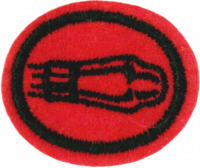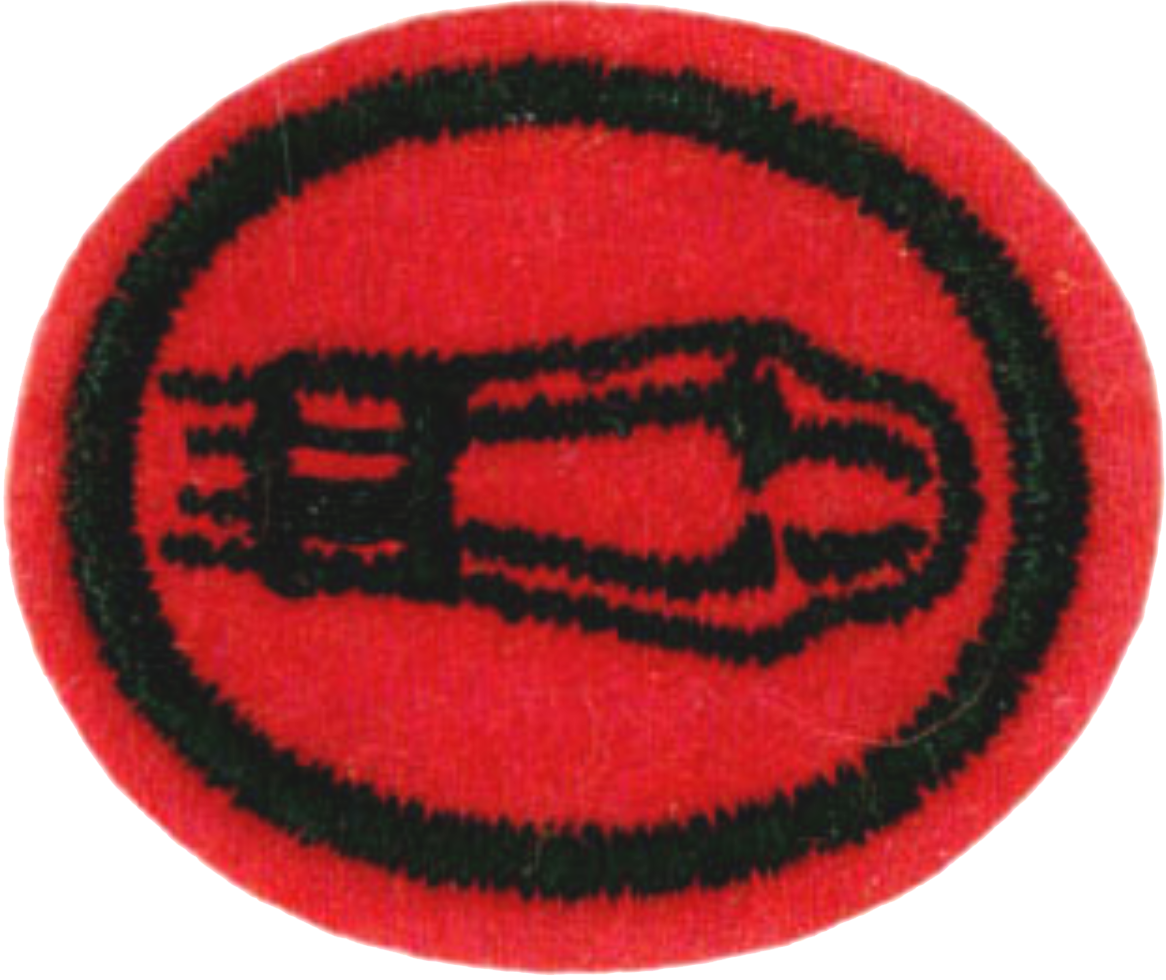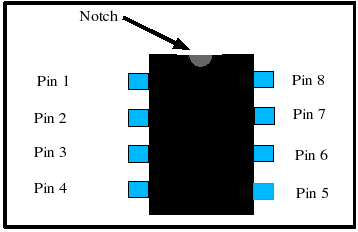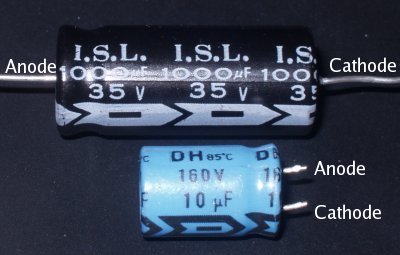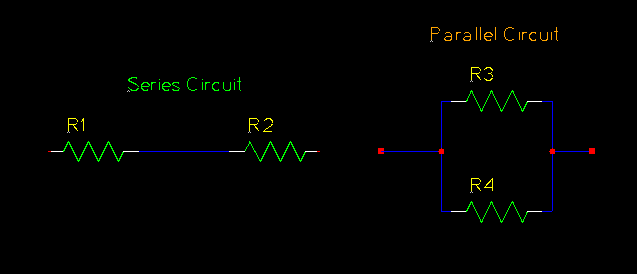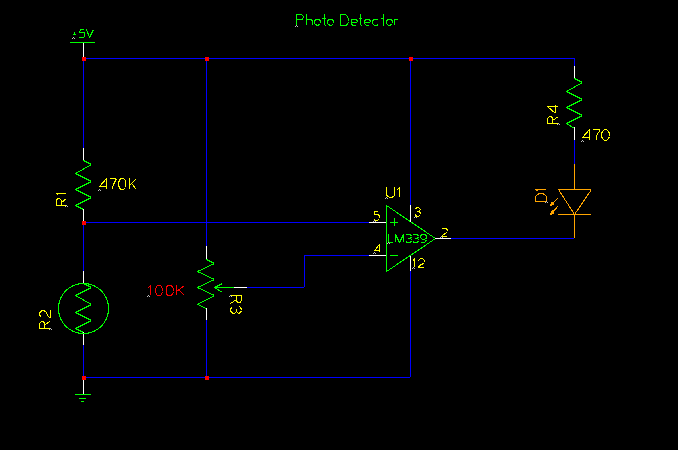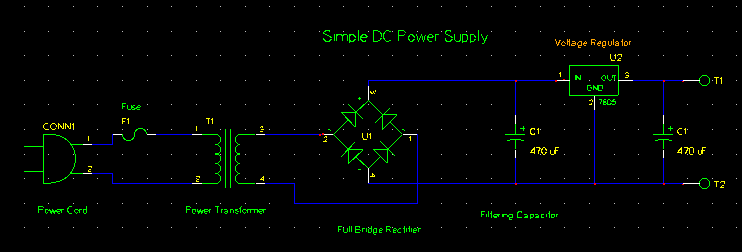Especialidades JA/Radioelectrónica/Respuestas
Nivel de destreza
2
Año
1938
Version
29.12.2025
Autoridad de aprobación
Asociación General
1
2
The Standard EIA Color Code Table per EIA-RS-279 is as follows:
| Color | 1st band | 2nd band | 3rd band (Multiplier) | 4th band (Tolerance) | Temp. Coefficient |
|---|---|---|---|---|---|
| Black | 0 | 0 | ×100 | ||
| Brown | 1 | 1 | ×101 | ±1% (F) | 100 ppm |
| Red | 2 | 2 | ×102 | ±2% (G) | 50 ppm |
| Orange | 3 | 3 | ×103 | 15 ppm | |
| Yellow | 4 | 4 | ×104 | 25 ppm | |
| Green | 5 | 5 | ×105 | ±0.5% (D) | |
| Blue | 6 | 6 | ×106 | ±0.25% (C) | |
| Violet | 7 | 7 | ×107 | ±0.1% (B) | |
| Gray | 8 | 8 | ×108 | ±0.05% (A) | |
| White | 9 | 9 | ×109 | ||
| Gold | ×0.1 | ±5% (J) | |||
| Silver | ×0.01 | ±10% (K) | |||
| None | ±20% (M) |
3
4
- a. Las resistencias
- b. Condensadores variables
- c. Condensadores fijos
- d. Bobinas
- e. Transistores
- f. Circuitos integrados
- g. Diodos
- h. Transformadores
5
If a voltage is applied across a resistor, current will flow through it. Ohm's law describes the relationship between this current, voltage, and resistance. It can be written as
[math]\displaystyle{ V = I R }[/math]
Where v is voltage (measured in volts), i is current (measured in amps), and r is resistance (measured in ohms). The equation can also be written as
[math]\displaystyle{ I = \frac{V}{R} }[/math]
and
[math]\displaystyle{ R = \frac{V}{I} }[/math]
Basically, it means that if the voltage is held constant and the resistance is decreased, the current is increased. Or if the resistance is held constant and the current is increased, the voltage will also increase.
6
Integrated Circuits
Integrated circuits usually have some means of indicating where "pin 1" is on the device. Once pin 1 is located, the remaining pins are numbered going counter-clockwise around the device. On a DIP, pin one is located to the left of a notch milled into the top of the IC as shown below:
Transistors
Transistors come in a variety of packages. To determine which pin is the base, collector, and emitter (bipolar transistors) or gate, source, and drain (field effect transistors), refer to the device's data sheet.
Diodes
A diode is usually marked with a stripe near its cathode. Current flows from the anode to the cathode, but not from the cathode to the anode. The stripe can be interpreted to look like a gate that won't let the current enter.
Capacitors
Only polarized capacitors are "pinned," and care must be taken to not plug them in backwards. If an electrolytic capacitor is charged in reverse, it can explode. Polarized capacitors are often marked with a stripe showing which terminal is the cathode (negative terminal). Sometimes the stripe will connect the cathode and the anode, but it will have arrows or minus signs on the stripe indicating direction of current flow (anode to cathode). In a schematic, the curved plate of the capacitor represents the cathode and the straight plate represents the anode.
In the picture above, the cathode of the black capacitor is on the right. The cathode of the blue capacitor is toward the bottom.
7
A series circuit is a circuit in which the components are placed end-to-end. A parallel circuit connects both terminals of two components together.
In a series circuit the current flowing through both devices will be equal, but the voltage across them will be different if the resistances are different.
In a parallel circuit, the voltage across the two elements will be identical, but the current divides between them. Some current goes through the top, the rest goes through the bottom.
8
Good places to find components for the projects detailed below include Radio Shack, Mouser, Digikey, and Jameco. All of these suppliers will sell to hobbyists in small quantities.
Another option for building these is to buy a kit. You can buy kits for individual projects or you can buy general purpose kits that will let you experiment with many different circuits. Check with Radio Shack to see their current offerings. Electronics kits can also be found at toy stores, especially those that emphasize "learning" toys. Such suppliers include Toys R Us and Imaginarium, both of which offer kits over the Internet via Amazon.
8a
The Photocell Guard circuit is a photo sensitive switch that will either turn on or turn off some device. In modern terminology, it would be called a photo-sensitive switch. A Photocell Counter is a circuit which counts the number of times a photo-sensitive switch is activated. In modern terminology, it would be called a Photo-sensitive Counting Circuit.
In this circuit, R2 is a cadmium sulfide cell (CdS cell) - that is, a light-sensitive resistor. When exposed to light, the resistance of the cell decreases. In darkness, the cell has a higher resistance. R1 and R2 together form a voltage divider circuit. As the light striking CdS cell gets brighter, the voltage at the common terminal decreases. As it gets darker, the voltage increases. This voltage is applied to the positive terminal of a comparator IC. The negative terminal of the comparator is connected to the wiper of a potentiometer which forms a second voltage divider circuit. This voltage can be adjusted by tuning the potentiometer. When the light striking the CdS cell gets bright enough, it causes the voltage on the positive terminal to fall below the voltage on the negative terminal. This causes the output of the comparator to go to zero volts, thus lighting the LED. When it gets dark again, the LED will turn off.
The action of the LED can be reversed (on when dark, off when bright) by reversing the positions of R1 and R2 (the CdS cell), by swapping the positive and negative terminals of the comparator, or by connecting the LED through a resistor to ground instead of connecting it through a resistor to power.
8b
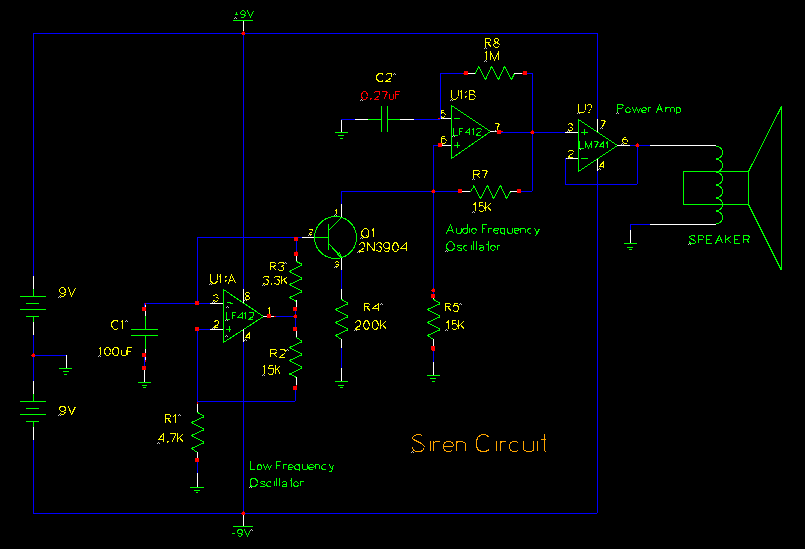
The circuit presented here looks intimidating at first glance, but as with most things, when it is broken down into smaller parts, it's a lot easier to understand.
The first thing to note is that this circuit requires a bipolar power supply - that is, a power supply that can provide both positive and negative voltages. This is accomplished here with two batteries. The circuit was tested with voltages ranging from ±4.5V to ±12V, so a pair of 9 volt batteries works pretty well.
Moving to the right we come to an op-amp configured as a low-frequency oscillator. This oscillator, in conjunction with the transistor Q1 controls the frequency of a second oscillator (denoted as the "Audio Frequency Oscillator" in the schematic.
The frequency of the low-frequency oscillator is set by the capacitor C1, and the resistors R1, R2, and R3. When the output of the amplifier (at pin 1) is high, C1 charges through R1. When the voltage across C1 exceeds the threshold voltage on the positive terminal of the op-amp, the output will go low. When this happens, C1 will then discharge though R1 and the voltage at the positive terminal will change to a negative value. When C1's voltage drops below the threshold voltage at the positive terminal, the output switches high again, and the cycle repeats. The threshold voltage at the positive terminal is set by the ratio of R1 and R2, as well as by the output of the amplifier:
[math]\displaystyle{ V_{thresh} = \frac{R1}{R1+R2} \times V_{out} }[/math]
If the voltage at the output of the low-frequency oscillator is observed on an oscilloscope, it will be shown as a square wave, oscillating between the two battery supply voltages. If this value were used to drive the base of Q1, the transistor would switch suddenly between full-on and full-off, and this would cause the audio oscillator's frequency to jump suddenly between two values (this makes it sound more like a cell phone ringing than a siren - try it!). To get a siren-effect, we need a smooth frequency transition, so the base of the transistor is driven with the voltage on the capacitor C1 which is a triangle wave.
The next portion of the circuit to consider is the audio frequency oscillator. This circuit is almost exactly the same as the low-frequency oscillator, except that the RC values have been changed so that it oscillates at a higher frequency, and the voltage divider circuit that sets the threshold voltage at the positive terminal (pin 5) is modified. The lower half of this voltage divider includes a transistor. As the transistor turns on, the resistance of the lower half of the voltage-divider is changed, and this will change the frequency of the audio oscillator. Thus, the pitch of the audio will increase and decrease at a rate set by the low-frequency oscillator.
Finally, we come to the power amplifier. This is a simple unity-follower op-amp, and its purpose is to drive the speaker and to isolate it from the audio oscillator. If the speaker were connected directly to the output of the audio oscillator, it would change the characteristics of that section, and we would not hear the siren effect.
8c
This link has some material on using an LM3914 as a Bar Graph Meter.
Here's another link for building a Digital Dashboard Meter.
There are several analog to digital converter (including the MAX136, MAX1496, and ICL7107) chips that will directly drive any of several 7-segment LED displays. A web search of these part numbers (or search for "3.5 digit LED" for other devices) should turn up a data sheet, and most data sheets have "typical application" sections showing how these can be connected.
8d
8e
In this DC power supply, household current (120VAC, 60Hz in North America) is applied to the power cord on the left. The fuse protects the circuit and should not be omitted. The voltage is then stepped down by the power transformer. Power transformers are available at Radio Shack and at hardware stores (see the doorbell section). Try to select a transformer that will output a voltage close to but a little higher than the desired DC output voltage.
Once the voltage has been stepped down, it goes through a network of diodes set up as a "full bridge rectifier." The diodes direct current to the top of the network and allow it to return through the bottom, regardless of whether the input voltage is positive or negative.
The capacitor then smooths out the voltage. Without the capacitor, the output from the diode network would continually drop to zero, and then rise back up to its peak value. The capacitor averages this out, giving a smoothed DC value.
The next element in the circuit is an LM7805, a 5-volt linear voltage regulator. This can be replaced with similar devices to get different voltages (i.e., an LM7812 for 12V, an LM7809 for 9 volts, etc.). The LM7805 will output a steady 5 Volts as long as the input voltage is sufficiently high. The transformer should be chosen such that the voltage input to the regulator is not much higher than 5V (6V or 7V would be good). Excess voltage is dropped across the device's input and output terminals, and is converted to heat. The greater this voltage, the more heat the device has to dissipate. Since it can only dissipate a finite amount of heat, this in effect limits the amount of power this circuit can provide. Attaching a heat sink to the LM7805 will also help.
The circuit should be mounted in some sort of enclosure to protect the 120VAC input power terminals. The power terminals themselves should be wrapped in electrical tape or in heat shrink tubing for additional protection.
8f
Although this FM Radio Project uses only one transistor, it is still fairly complicated. It might be better to buy a kit for this one. Check with Radio Shack.
9
The easiest way to commit these diagrams to memory is by understanding them. The photocell and power supplies are the easiest to understand, and if both are made, the power supply can be used to power the photocell circuit. The siren and radio circuits are somewhat more complicated, but they are also more rewarding.
10
- Computers - for work and for play.
- Entertainment - Televisions, stereos, video games, toys, etc.
- Medical - Patient monitoring, diagnostics (MRI, CT-scans, X-rays), etc.
- Industrial - motor controllers, robotics, etc.
- Appliances - microwaves, timers, ovens, refrigerators, washing machines, dryers.
- Radio Communications - police and fire radios, CB radios, fleet radios.
- Telecommunications - telephones, fax machines.
- Fire Safety - fire alarms, smoke detectors, sprinkler systems.
- Water Supply - water towers signal pumping stations, etc.
- Security - metal detectors and x-ray machines at airports, anti-theft devices in stores, security camera.
- Music - amplifiers, synthesizers, sound mixers, recording equipment.
- Traffic Control - traffic signals.
- Automotive - Air bags, antilock brakes, diagnostics, electronic ignition, etc.
Historical Notes
This honor was original named Radio Mechanics. The name was changed to Radio Electronics in 1956.
